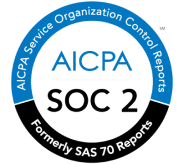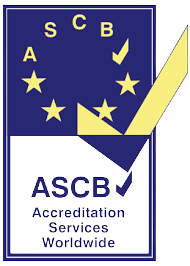Table of Content
Introduction
Performance management is a cornerstone of organisational success. It involves a systematic process of setting expectations, monitoring progress, and providing employee feedback. Effectively tackling performance management issues can lead to a more engaged and productive workforce. However, there will still be performance management issues which the talent development and management heads have to look after and sort those out on time.
With the intervention of a future-forward HRMS software in India like uKnowva, we can create a guide on how to tackle these issues swiftly. Thus, refer to the blog below, created exclusively for tackling performance management woes regularly and ensuring that the culture remains progressive and purposeful at all times.
Want to skip the content?

Understanding Performance Management
Performance management is a dynamic process encompassing various strategies to enhance employee productivity and satisfaction. It involves the following key elements:
- Establishing Clear Objectives
At the core of performance management lies the need for clear, measurable objectives. These objectives serve as a roadmap for employees, guiding them towards achieving their full potential. Managers must communicate expectations effectively, ensuring employees understand their roles and responsibilities.
- Providing Constructive Feedback
Constructive feedback is a powerful tool for improvement. It involves acknowledging achievements and addressing areas for development in a supportive and encouraging manner. Managers can motivate employees to excel in their roles by offering specific feedback.
- Conducting Regular Check-Ins
Frequent check-ins provide opportunities for ongoing communication between managers and employees. These discussions enable the identification of challenges, celebration of successes, and adjustment of goals as needed. Regular interactions foster a culture of continuous improvement.
- Recognising and Rewarding Achievements
Acknowledging and rewarding achievements reinforces positive behaviour and performance. Whether through verbal praise, tangible rewards, or advancement opportunities, recognition is a powerful motivator for employees.
Strategies for Effective Performance Management
- Implementing a Goal-Oriented Approach
Aligning individual goals with organisational objectives is essential for success. This ensures that every employee's efforts contribute to the overall mission and vision of the company. By fostering goal-oriented behaviour, organisations create a culture of accountability and achievement.
- Embracing Technology for Tracking and Evaluation
In today's digital age, leveraging performance management software can streamline the tracking and evaluation. These tools provide valuable data and analytics, enabling managers to make informed decisions about performance improvement strategies.
- Providing Ongoing Training and Development
Investing in employee growth and development is a cornerstone of effective performance management. Offering training programs and opportunities for skill enhancement not only benefits employees but also strengthens the organisation as a whole.
- Encouraging Employee Self-Assessment
Empowering employees to self-assess their performance fosters a sense of ownership and accountability. This approach encourages reflection and self-improvement, increasing job satisfaction and productivity.
Implementing Effective Performance Management
- Training and Development Opportunities
Training and development opportunities are pivotal in nurturing a skilled and motivated workforce. They encompass many learning experiences to enhance employees' capabilities and knowledge base. These initiatives can range from workshops, seminars, and online courses to on-the-job training and mentoring programs. By investing in training and development, organisations equip their employees with the latest industry insights and best practices and demonstrate a commitment to their professional growth.
Moreover, these opportunities are a powerful retention tool, as employees value organisations that invest in their continuous learning and skill enhancement. It fosters a workplace culture of continuous improvement, where employees take ownership of their development. This, in turn, leads to higher job satisfaction, increased productivity, and a more innovative and adaptable workforce. In a rapidly evolving business landscape, providing ample training and development opportunities is a perk and a strategic imperative for organisations looking to stay competitive and thrive in the long run.
- Recognise and Reward Achievements
Recognizing and rewarding achievements is fundamental to fostering a positive and high-performing work environment. It involves acknowledging and celebrating employees' accomplishments, whether individual successes or contributions to team goals. This can take various forms, including verbal praise, certificates of achievement, monetary bonuses, or even promotions.
Such recognition is a powerful motivator, instilling employees with a sense of accomplishment and pride for their hard work and dedication. It reinforces the belief that the organisation values and appreciates their efforts. Furthermore, a well-structured rewards system can help retain top talent, as employees are likely to stay with a company that acknowledges and celebrates their successes.
By recognising and rewarding achievements, organisations also set a positive example and create a culture of excellence. It encourages healthy competition and inspires others to strive for their best. Overall, this practice boosts morale and job satisfaction and contributes to a more engaged and committed workforce, ultimately driving organisational success.
Conclusion
Addressing performance management issues is essential for maintaining a motivated and productive workforce. By setting clear expectations, fostering open communication, aligning goals, and standardising evaluation criteria, organisations can overcome these challenges. Remember, effective performance management is an ongoing process that requires dedication and consistent effort.
FAQs
Q1. How often should performance evaluations be conducted?
Performance evaluations should be conducted at least annually, but more frequent check-ins can benefit ongoing feedback and development.
Q2. What should be included in a performance improvement plan?
A performance improvement plan should include specific goals, a timeline for improvement, and support/resources provided to help the employee meet the expectations.
Q3. How can managers address resistance to performance feedback?
Managers can address resistance by creating a supportive and non-judgmental environment, focusing on constructive feedback, and actively listening to employee concerns.












